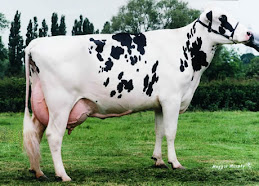It’s never been an easy life. Up at 4:30 for the first milking, finish up around 8 at night. You make a living, but not much of one, which is why the average age of dairy farmers keeps creeping up into the 50s and 60s. The big payday is when you get out of it and sell your land.
“It’s a profession that if you weren’t born into it, no one would do it,” said Donald Hosking, who with his wife, Joanne, raises 100 Holsteins on 81 lovely rolling acres in Delaware County at the far reaches of the Catskills. “We just don’t know any better.”
So back when they started dairy farming on Roses Brook Road 22 years ago, there were seven other dairy farms on the road. Now one other is still hanging on, and the rest have been sold to lawyers, architects, commodity brokers from the city and suburbs. In 1998, there were 8,700 dairy farmers in New York. Now there are 5,700.
For all the vagaries of markets and weather and balky cows, there used to be a hazy ostensible logic to the business. Now it’s a global market complicated by commodities traders, the balance between imports and exports, the needs of agri-conglomerates, and the role played by strange new players like the imported milk protein concentrates, or M.P.C.’s, which some say are distorting the market with unregulated and potentially unsafe milk substitutes used in cheeses and dips.
But the bottom line seems to be that the global recession slammed the brakes on demand — fewer restaurant visits, less ice cream, less cheese — at a time of peak supply. Two years ago, Mr. Hosking was making about $20 per 100 pounds of milk. Now he’s making about $10.85. Meanwhile his costs — grain, fuel, high-protein feed — have gone up about 50 percent. Last year he took out about $40,000 from savings to keep going. This year it will be about $50,000. Farmers who have tapped out their equity — a growing number — could be gone in months.
“It’s 1973 prices and 2009 costs,” he said. “It still costs X number of dollars to run the farm, no matter what you’re bringing in. Detroit can shut down when their lots are full. We still have to feed and milk our cows every day.”
Dave Rama, who has a cattle auction business in Delhi, said everyone was in the same boat, with the cost of producing milk exceeding its price.
“I am learning more about bankruptcy than I ever intended to learn,” Mr. Rama said.
He drives from Mr. Hosking’s farm to Unadilla, the hills impossibly green from all the rain, grain silos poking into the blue sky. There he meets two of the younger farmers, Luke and Derek Johnson, 32 and 24, Cornell ag achool grads taking over their family farm. There are 300 cows and beehives and fields of corn, the bounty of American agriculture everywhere you turn.
LUKE JOHNSON says he’s always been an optimist, and he figures this will work out, too. He’s lucky to have a highly regarded farm operation, though he worries about his neighbors and already has $300,000 in debt against $500,000 in equity in cows and machinery. Still, he says: “It’s hard to see good farmers desperate. I was just in California at the national Holstein convention, and all the delegates there had desperate looks on their faces, as if they didn’t know what was going to happen next.”
HOBART, N.Y. – It all seems far away. We don’t see where our food comes from, and who could pay attention anyway, what with the endless cavalcade of amusements that’s the summer news — the randy governors and senators, Jon and Kate, poor, put-upon Sarah Palin, the farewell to M.J.? But maybe that’s the idea. In the real world around the corner and in distant places like Hobart and Delhi and Unadilla it’s not getting better and it’s not getting clearer, so bring on the freak shows, the more the merrier.
Mike Van Amburgh is an animal science professor at Cornell who grew up on an Ohio dairy farm. “I’m almost 50 years old, and in my lifetime it’s never been this bad,” he said. “Everyone’s in the red.”
For the dairy farmers, he said, absent a sudden worldwide boom pumping up demand, the most likely result is a historic washout of dairy farmers — some say 10 percent, 20 percent or more around the end of the year — that would reduce supply, raise prices and reset the bar.
Which kind of dairymen, he was asked, are in the biggest trouble?
“Everybody,” he replied.
Subscribe to:
Post Comments (Atom)

No comments:
Post a Comment